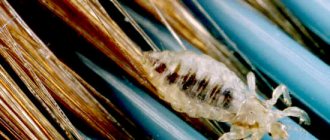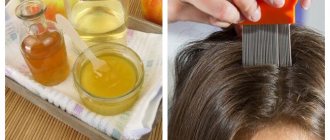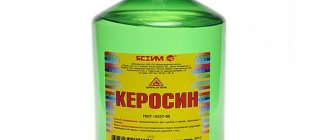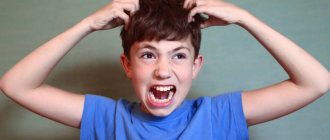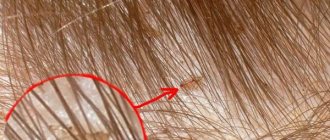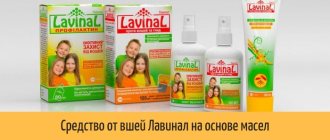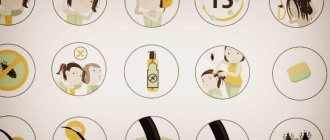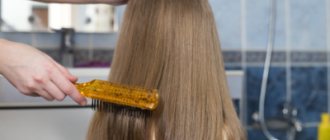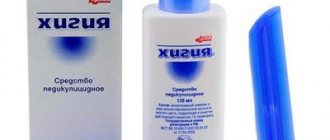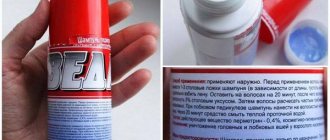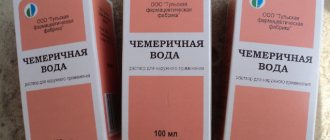Kerosene is an oil-based liquid that is obtained from the refining of petroleum products. Kerosene is used as fuel not only to refuel aircraft, but also in industry to generate electricity. But some people use kerosene to kill various kinds of parasites, for example, it has the ability to destroy nits and lice, regardless of their type. Kerosene has been used in folk medicine for a long time, but in the treatment of head lice it is inferior in effectiveness to modern medications.
Does kerosene help against lice?
At home, removing lice and nits using kerosene is quite possible. This oily mixture has a detrimental effect on parasites due to some of its characteristics:
- strong and unpleasant odor repels pests;
- the chemical composition blocks the breathing of adults, killing them;
- although the shell of the larvae is thicker, kerosene clogs it, weakening the future offspring;
- the composition of the adhesive base with which the louse attaches its face to the hair is easily washed off with kerosene;
- You can buy kerosene at any hardware or construction store; it is cheap.
Some sources write that kerosene “cures” lice, but this is absolutely not true. Yes, this flammable liquid kills adult bloodsuckers and significantly damages their offspring, but complex treatment also involves helping the scalp to recover. Kerosene, on the contrary, can irritate the skin even more, leaving burns and inflammation at the sites of lice bites. We advise you to resort to this folk method of treating lice only in extreme cases, when there is no pharmacy nearby or there is no opportunity to purchase a professional drug.
Contraindications
The use of kerosene against lice has a number of contraindications:
- if you frequently dye your hair with dyes, after using the liquid, they become very brittle and dull;
- Do not use if there is damage to the skin;
- it should not be used by people who have allergic reactions;
- It is prohibited for use by patients suffering from asthma;
- Do not use (or use with great caution) when getting rid of lice in children.
How to use correctly and what kerosene to use
What kind of kerosene can I use? Only technical and lighting , no other will be suitable for this purpose.
To remove lice with kerosene without harming the health of the infected person, you need to adhere to clear rules for using this folk recipe.
- Before use, perform a test to identify an allergic skin reaction. To do this, you need to moisten a cotton pad with kerosene and apply the liquid to the inside of your wrist. After 10 minutes, it will be possible to evaluate the test result and if redness or rashes appear at the application site, the traditional method should be abandoned, otherwise there is a risk of anaphylactic shock or Quincke's edema, these are the most severe forms of developing an allergy to kerosene.
- If you are not allergic to the product, you can safely apply kerosene to your hair, if possible without rubbing it into the scalp. Kerosene must be distributed over the entire length of the hair. Most of the nits and insects are located at the roots of the hair. Be careful not to get kerosene in your eyes.
- When all your hair is covered in kerosene, you need to put on a plastic bag or shower cap so that all your hair is under it, and you can wrap your head with a towel or a warm scarf.
- It is necessary to keep your hair under cellophane for 15 to 30 minutes, depending on the severity of the spread of head lice. It is best to wash off kerosene with laundry soap or concentrated shampoo. Repeat rinsing your hair with shampoo at least 2 times.
- Next, it is important to comb out dead and weakened parasites using a narrow-toothed hair comb, these are sold at the pharmacy. As a last resort, you can use a comb with a fine distance between the teeth.
- To remove unpleasant odor, hair can be rinsed in acidic water with the addition of acetic acid; one teaspoon per liter of water will be enough.
- And to reduce the negative impact of kerosene on your hair, rinse it with chamomile decoction or hellebore water over the next week.
Mechanism of action
Kerosene for lice You can get rid of lice with kerosene in one procedure.
According to some sources, the product easily copes with nits, which is beyond the power of any modern drug. Kerosene against lice works in the same way as some professional products. The substance envelops the insect's body, penetrates the spiracles, and dissolves the chitinous cover. It blocks breathing and causes instant asphyxia. Death occurs within a few minutes after administration of the substance. It can kill adult lice and nymphs of different ages.
The pungent odor is unpleasant to lice. The pungent aroma blocks breathing, which also benefits the death of parasites. If at the same time the free access of oxygen is blocked, lice and larvae of all ages will die almost instantly.
Recipes with vinegar for lice and nits
No one wants to tell their friends that they have become “lousy” or go to the pharmacy and ask for a remedy for lice, although there is nothing wrong with that. But if you still couldn’t get to the pharmacy and buy a good product, you can try using kerosene.
Treatment consists of three stages. The first stage will destroy adult lice:
- A mixture is made of 1 tablespoon of kerosene , 2 tablespoons of sunflower or olive oil and 3 tablespoons of shampoo .
- The resulting composition is applied to damp hair from roots to ends.
- The hair is covered with a cellophane cap or bag, and a towel is wrapped on top to create a “bath”.
- In this state, the drug should remain on the hair for 30-40 minutes. This is an acceptable amount of time during which the skin will not get burned, and most of the lice will die.
- The head and hair are washed with warm water and vinegar; for this, 2 tablespoons of 9 percent vinegar are diluted per 1 liter of clean water.
- The hair is washed again, but this time with shampoo and tap water.
- From the roots to the very ends, the hair is combed with a special comb. This is a very important procedure, it cannot be neglected, otherwise the effect will be short-lived.
The second stage will weaken the attachment of the remaining nits (larvae) to the hair:
- The next day or every other day, a consistency is made from one teaspoon of kerosene and two tablespoons of oil.
- The resulting composition is applied to the entire length of the hair and left for 20 minutes without covering.
- Rinse your hair with the juice of one lemon mixed with a liter of water.
- Comb your hair thoroughly with a comb.
- Rinse with shampoo.
The third stage is aimed at destroying accidentally surviving parasites. Some nits may have survived and hatched. To prevent them from starting to multiply and die, four to five days after the second procedure, do the following:
- Prepare a mixture of 1 tablespoon of kerosene and 3 tablespoons of honey, diluted with three tablespoons of hot boiled water.
- Apply the mixture to your hair and leave for 30 minutes.
- Rinse off with warm water and wash your hair with shampoo.
- Go through your hair with a comb again to make sure there are no nits or dead lice.
To disinfect things, you can use a solution of water and kerosene in a ratio of 10:1. All things that came into contact with a person at the time of illness must be soaked overnight, then rinsed well and hung to dry, then ironed with the hottest possible iron. The same recipe will help in the fight against body lice.
To eliminate pubic lice that are localized in the intimate area, the most optimal recipe would be a kerosene-based solution with a small amount of regular vegetable sunflower oil. The components are taken in proportions of two tablespoons of oil to one spoon of kerosene. The resulting consistency should be applied to the area where lice live, if possible, cover with foil and lie down for 30 minutes. Afterwards, take a shower with plenty of gel or soap.
Based on statistics, a one-time treatment with kerosene is not enough, so to completely eliminate it, you need to repeat the procedure after 2-3 days. Only in this case will all adult individuals and their future offspring die.
Features of the treatment of pediculosis in children
Children under 5 years old should not use kerosene, but older children are not recommended to use this substance in concentrated form. You need to mix it with oil, water and other ingredients, and also reduce the exposure time.
- Mild composition for children: mix kerosene with shampoo 1:1, apply to the head and leave for 15 minutes, then rinse, comb and dry hair. Duration of treatment: 14 days, repeat 2-3 times.
- Gentle mask with honey (3 tbsp) and kerosene (1 tsp): mix the ingredients with a teaspoon of shampoo and dilute 4 tbsp. l. hot water, then treat the roots, put on a cap for 30 minutes. Duration of treatment: daily, no more than 5 days.
After treatment, the head is washed several times with shampoo and the hair is combed. The consequences of improper use of kerosene for a child can result in chemical burns and allergic edema.
When treating head lice in children, kerosene should be softened with oil, honey, and shampoo.
Can it be applied to a child?
Back in Soviet times, kerosene was very popular as a treatment for head lice; this method was especially used on children, since at that time there was not a greater variety of pharmaceutical products as there are now. Back then, no one even thought that kerosene could harm a child.
But in fact, kerosene can cause a lot of health problems for a child. The thing is that the delicate scalp of a child before the age of 14 is susceptible to any toxic effects, which can result in a 1st, 2nd, or even 3rd degree burn. Therefore, it is better to treat head lice in children with more gentle antiparasitic agents.
How to get rid of dangerous insects?
Once parasites are identified, treatment for head lice in children begins immediately. This will prevent the spread of the disease and possible complications, and will also relieve the baby from itching and scratching. Suitable medicine can be purchased at a pharmacy. But if you are in doubt, a doctor – a pediatrician or a dermatologist – will help. He will tell you how to cure lice, as well as the best remedy for the disease, taking into account the individual characteristics of the child.
Pharmaceutical products for head lice for children
The pharmaceutical industry produces a wide range of medications for parasitic infections for children and adults. They are produced in various forms: ointments, lotions, aerosols, sprays, shampoos, creams, soaps. Which product should I choose for my child?
In children, treatment for head lice is carried out with pharmaceuticals containing the following active ingredients:
- Benzyl benzoate;
- Boric ointment;
- Dimethicone biphasic;
- Malathion;
- Cheremitsa tincture;
- Permethrin;
- Fenotrin;
- Essential oils of anise, lavender and ylang-ylang.
Those formulations containing permethrin are not suitable for hypersensitive children and children under three years of age. Preparations containing phenothrin are not recommended for children under five years of age. Benzyl benzoate and cherry water can cause irritation, so they should only be used by older students.
How to treat pediculosis in young children? Nyx cream, boric ointment, and Anti-bit soap are suitable. You definitely need to buy a good shampoo for head lice: “Pedikulen” (herbal preparation), “Hygia”, “Itax”, “Parasidosis”, “Medilis Super”, “Nittafor”, “Medifox”.
Thanks to modern formulations with special silicones that trap parasites in an airtight cocoon, children quickly and safely get rid of the problem. Such products include “Nuda” spray, “Paranit” shampoo, spray and lotion, and “Full Marks” cleansing liquid. In this case, use is possible from a very young age.
Before using the product, carefully read the instructions. Do not use medications if your child's skin is very inflamed or scratched. Be careful not to get the composition into your eyes. After a week, it is worth repeating the treatment for preventive purposes.
Please note that many pharmaceutical drugs neutralize lice and nits through neurotoxins that attack the central nervous system of the parasites. The component permethrin is also used in conventional agricultural pesticides, some preparations contain an even stronger neurotoxin - malathion - an insecticide also used in agriculture and banned for use in some countries due to its high toxicity
High doses of toxic pesticides can lead to breathing problems, asthma, and allergic skin reactions.
Treatment of head lice in children should be thoughtful; when choosing a drug for head lice, it is necessary to evaluate not only the speed of its action, but also the potential risks for the child
Complications during the treatment of parasitic infection
A child's defense system is weaker than an adult's
It is very important to follow the correct dosage of pharmaceuticals to avoid intoxication
Sometimes the body's reaction to a drug composition can be negative. Only the attending physician will help here. In what cases should you contact him:
- If severe itching does not disappear within several days after starting treatment;
- If an inflammatory process occurs;
- If red rays appear from the site of the bite;
- If the temperature rises above 37.9 degrees;
- If there are symptoms of an allergic reaction - swelling, tearing, runny nose.
Before treating head lice in children prone to allergies, in addition to basic medications, you need to select antihistamines.
Many parents are concerned about the question: will they be given sick leave for this illness. In case of head lice in children, parents are not given sick leave. It is believed that modern drugs cure the disease in one evening. However, in case of complications or allergies to medications, especially with an increase in temperature, they should be sent to sick leave.
Precautionary measures
- Kerosene is a rather aggressive liquid, and its use in its pure form without dilution with water often causes severe skin burns. This is especially true for preschool children.
- It is strictly not recommended to treat lice on colored hair with kerosene. The aggressive effect of ammonia in the dye already leads to weakening of the hair, so if you do not want to treat alopecia in the future, then you cannot use kerosene.
- When treating hair with kerosene, it is very important to ensure that the liquid does not get on the mucous membrane of the cornea. If this happens, immediately rinse your eyes with plain water to prevent burning.
What is anti-pediculosis styling?
Upon admission to hospital treatment, a preliminary examination is carried out to detect lice. This happens at the sanitary inspection station in the clinic. Examinations for head lice in the department are carried out by medical staff. The nurse should use a magnifying glass or a special comb to examine the occipital and temporal parts of the head.
Lice detection
Each recorded case is recorded in a journal, and a corresponding note is made on the patient’s card. Depending on the patient’s condition, a treatment plan is developed and first aid is provided.
The patient signs a document in which he gives his consent to undergo treatment in the inpatient department. Depending on the financial condition of the clinic, the presence or absence of an insurance certificate from the patient, lice medications are taken either from the institution’s fund or purchased independently.
The procedure is performed in a well-ventilated, isolated room. The nurse explains to the patient all the nuances of the upcoming event and prepares the necessary equipment:
- scissors;
- container for hair disinfection;
- latex gloves;
- oilcloth drape;
- plastic cap;
- fine pitch comb;
- pediculicide;
- packages;
- cotton swabs;
- vinegar 9%;
- alcohol.
Anti-pediculosis treatment
The processing algorithm is as follows:
- The patient is seated on the couch. A knitted tourniquet is tied around the scalp. An oilcloth cape is put on the shoulders.
- The person carrying out the treatment puts on an additional robe, scarf, and rubber gloves.
- Apply the antiparasitic solution evenly to the strands, avoiding contact with the face and mucous membranes. Rub the product into the scalp with light massage movements.
- Put a cap or scarf on the patient.
- Exposure lasts from 20 to 40 minutes, depending on the product used and the recommendations specified in the instructions.
- Rinse your hair with warm water.
- Rinse with vinegar solution.
- Lay down light-colored paper and comb out dead insects and nits.
- Check for any remaining lice.
Upon completion of the procedure, the patient’s underwear and clothes are packed into a bag. A robe and scarf are placed in the second bag. Packed items are sent to a disinfection chamber. The paper on which the lice were combed out is burned. Disinfection work is carried out in the premises. If the patient’s condition allows, he is subjected to hygienic procedures.
A repeat examination for pediculosis is carried out after 7 days. If necessary, the procedure should be repeated. If the patient is discharged earlier than the specified period, further examinations are carried out in the clinic. Beforehand, the patient is given recommendations for the prevention of head lice, which will help prevent the appearance of lice in the future.
The frequency of examination of the patient is determined by the type of head lice and the degree of infestation, but at least once every ten days.
The processing method is related to the type of lice:
- For pilar lice, medical personnel dressed in a gown, scarf and gloves examine the patient's scalp. If detected, the employee puts on another set of protective clothing to avoid infection. The seat is covered with film or oilcloth, the patient is seated, covering his shoulders with a cape. Protect the face and neck with a cotton bandage to prevent the insecticide from getting on the skin and mucous membranes. The drug is applied for a quarter of an hour, covered with a film and then a cotton cap. At the end of the exposure period, wash your hair, rinsing with vinegar to destroy nits. Then they comb for a long time (at least a quarter of an hour), achieving complete removal of insects, over the basin, in a separate strand.
- For lice pubis, or phthiriasis, the genital area is most often treated with the drug in an aerosol. To make sure there are no parasites, it is best to remove hair in the groin area, armpits, and chest. After the exposure time has expired (half an hour - an hour), the patient needs to wash with soap in the shower.
- In case of body lice, it is necessary to treat not only the person himself, but also check his clothes and linen - underwear and bedding. The body louse does not live permanently on the body, moving onto it only to feed. It can be found in the seams and folds of items that must be thoroughly cooked, preferably boiled, and then ironed with a hot iron.
If the actions are carried out correctly, it is possible to destroy all insects, but for reliability, a second inspection is carried out after 10 days. The quarantine lasts a month, only if during this time there is no relapse, the infection is considered defeated.
Who can't?
In the article, we partially figured out who should not use flammable liquid to fight parasites, to summarize:
- children under 14 years of age;
- pregnant and lactating women;
- people with dry colored hair suffering from increased hair fragility;
- people with damage to the surface of the scalp;
- for allergy sufferers.
The stronger the concentration of kerosene, the more effective the resulting composition will be, but it is important to remember that kerosene and its vapors are harmful to humans.
Causes of pediculosis
The main cause of infection is contact with an already infected person, using personal belongings or swimming in the same pool. Household contact is the main source of lice infection. A person does not know where the danger lies in wait for him, because even when sending a child to kindergarten, one cannot be completely sure that he will not catch this disease and bring it home.
In addition, there are several provoking factors for the appearance of lice:
- frequent business trips;
- regular change of place of residence;
- promiscuous sex life;
- using other people's personal hygiene products;
- travel by public transport.
All these reasons can cause the appearance of head lice.
Lice
Lice are tiny parasites that easily migrate from person to person.
There are many types of lice in nature, but each of them affects only a specific group of creatures.
Description and varieties
Modern medicine identifies head, pubic and body lice, which provoke the development
a disease called pediculosis.
Head lice are blood-sucking, pale yellow insects. An adult reaches 2-4 mm. These insects parasitize the human scalp (mainly on the temples and occipital lobe), and in advanced stages they settle on the eyebrows and even eyelashes.
Body lice are similar in appearance to head lice, but individuals of the body lice are slightly larger (2-5 mm). They settle on the body, in clothes and bedding.
The pubic louse is a small yellow-gray bloodsucker that resembles a crab (size 1-1.5 mm). It affects the hairy areas of the skin in the genital area, in rare cases it settles in the armpits, mustache, beard, eyebrows and eyelashes.
Life cycle and reproduction
The louse is a rather nimble insect, but in terms of its characteristics it is seriously inferior to the ordinary earthen flea. The louse reproduces by laying eggs, commonly referred to as nits, yellowish-white in color. The egg is firmly glued to the hair by a special enzyme produced by the female louse.
Insects feed mainly on human blood, sucking about 0.003 ml at a time.
The life cycle of a human louse is 30-45 days, but an adult female lays 6-14 eggs every day.
Reason for appearance
The human louse cannot jump or fly, but it moves quickly, so the parasite easily migrates through direct contact with people, moving freely along the hairline.
But children run the risk of becoming infected with lice in large and long-term crowds of people: kindergartens, schools, health camps, etc. More often, this happens when a child combs himself with someone else’s comb, exchanges a hat, or sleeps on a pillow that is not his own.
Even an adult can pick up a parasitic disease in a hairdresser, hospital, on a train, on an airplane, etc.
Infection with pubic lice often occurs during sexual intercourse, when parasites move from one partner to another. But there are cases when pubic lice, having detached themselves from the carrier, land on an object - the carrier (be it clothing, a towel, bedding or your pet) and, finding themselves in new living conditions, continue the development of their species. It should be noted that the life cycle of the eggs of this parasite without a nutrient medium is about a week.
Signs of appearance
Lice manifest themselves almost immediately. After several bites from the same pubic lice that caused
Itchy, bluish spots remain on the body, and infection becomes obvious.
Prevention
How to reduce the risk of getting head lice:
- Always use only your own comb and do not allow anyone else to use it.
- Do not dry yourself with a towel in public places.
- If possible, follow a daily routine and stay in crowded places as little as possible.
- Wash your hair with shampoo once a week, as a preventive measure, if there is a risk of infection.
- Examine the head as often as possible to identify lice and nits (especially in a child); if detected, immediately begin to fight them.
